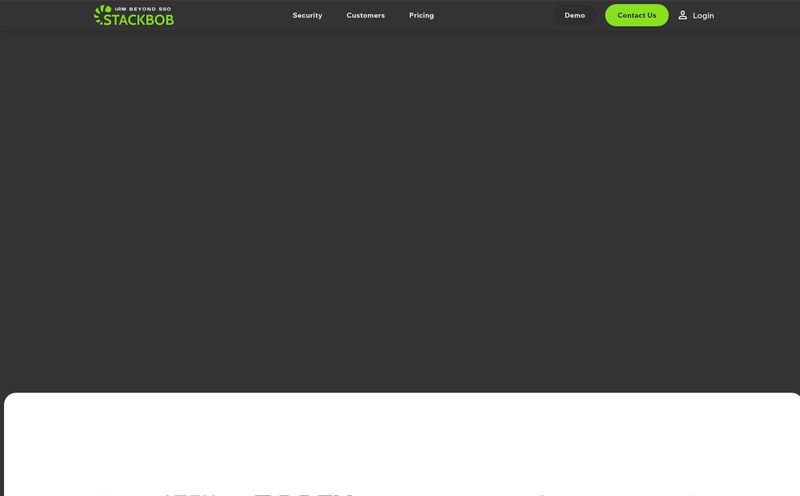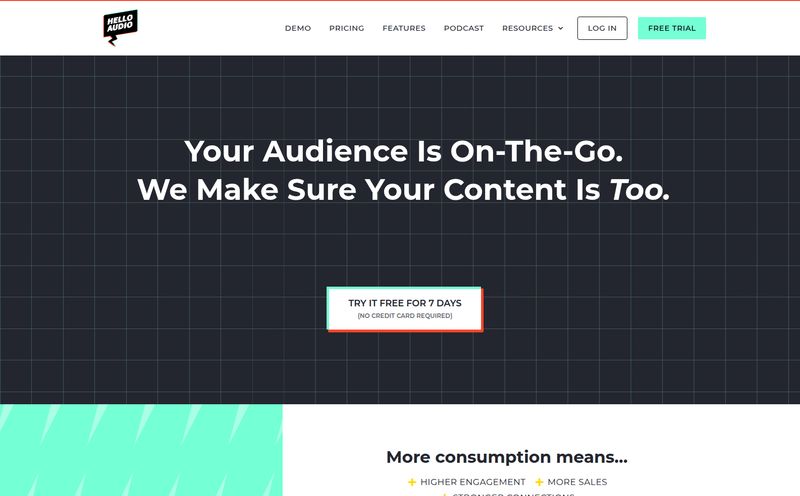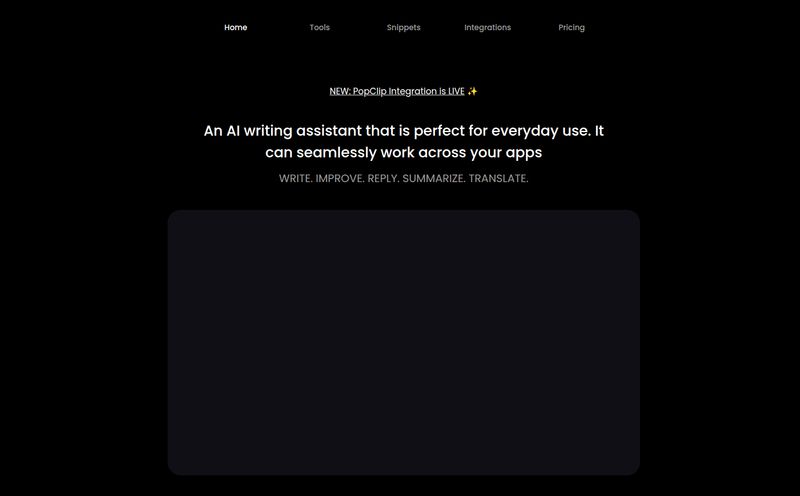If you're building anything—a SaaS product, an app, a community—you're drowning in feedback. It comes from everywhere, doesn't it? A half-formed thought in a Twitter DM. A passionate rant in a support email. That one-off comment in a private Slack channel you forgot existed. It’s like trying to catch rain in a thimble. You know there's value there, but most of it just splashes away.
For years, my system was a chaotic mess of spreadsheets, Trello boards, and a frighteningly unreliable memory. I’d tell users, “Thanks, great idea!” and promptly lose it in the digital ether. Sound familiar? I thought so. It’s a shared pain in the product world.
That's why I'm always on the lookout for tools that promise to solve this. Most are just glorified to-do lists. But recently, I stumbled upon a platform called Visionari. It calls itself an “AI-powered feedback system,” and my initial reaction was, naturally, a healthy dose of skepticism. AI is the buzzword of the decade, slapped onto everything like hot sauce. But I gave it a go, and I have… thoughts.

Visit Visionari
So, What Exactly is Visionari?
Okay, let's cut through the marketing fluff. At its core, Visionari is a central hub for all your user feedback. Imagine a single, smart inbox that doesn't just store feedback, but actually understands it. Instead of you manually sifting through hundreds of comments to spot a trend, Visionari uses AI to connect the dots. It groups similar requests, highlights popular ideas, and basically acts as a translator between raw user chatter and an actionable product strategy.
It’s designed to stop you from building features based on gut feelings or the “loudest person in the room” syndrome. We've all been there—pivoting your entire roadmap because one very vocal (and probably high-paying) client demanded something. Visionari aims to replace that with data-driven clarity. A bold claim, but one I was eager to test.
The Features That Genuinely Make a Difference
A tool is only as good as its features, right? Here’s where I think Visionari really shines, and where it feels less like just another tool and more like a co-pilot for your product.
The Brains of the Operation: AI-Powered Analysis
This is the secret sauce. You pipe in your feedback, and the AI gets to work. It’s surprisingly good at identifying themes. For example, if ten users ask for “dark mode,” five ask for a “night theme,” and three complain about the “bright interface,” Visionari is smart enough to group them all under a single, prioritized request. This is something that would take hours of manual tagging in a spreadsheet. It saves time, sure, but more importantly, it removes your own bias from the equation.
Ending the Spreadsheet Nightmare with Multi-Channel Collection
This was a huge one for me. Visionari gives you widgets and integrations to collect feedback right where your users are. You can pop a widget on your website, embed a form in an email, or connect it to other platforms. All that feedback, from all those different places, flows into one unified dashboard. No more copy-pasting. No more lost ideas. It's a simple concept, but the execution makes it feel like magic. It creates a seamless feedback loop that users are actually more likely to engage with.
Building Trust with Roadmaps and Changelogs
Here’s something I’ve become a huge advocate for: building in public. Your users are your best allies! Visionari makes this incredibly easy. With a single click, you can move a prioritized piece of feedback from your analysis board straight to a public-facing roadmap. Users can see what you're working on, what's planned, and what you’ve considered. It turns your development process from a black box into a conversation.
Even better is the automated changelog. When you mark a feature as “complete,” it automatically updates a changelog and can even notify the specific users who asked for that feature. Talk about making your users feel heard! This isn't just a feature; it's a powerful user retention strategy. People stick around when they feel like they’re part of the story.
Let's Talk About the Price Tag
Alright, the all-important question: what's this going to cost? I was pleasantly surprised here. The pricing feels pretty grounded in reality for its target audience. They have a few tiers that scale logically.
Here’s a quick breakdown of their plans:
| Plan | Price | Key Features |
|---|---|---|
| Solopreneur | $19 /month | Unlimited Feedbacks, 500 Users, 3 Team Members, Custom Branding. Perfect for indie hackers and small projects. |
| Startup | $39 /month | Everything in Solopreneur, plus up to 2000 Users, more widgets, and 5 Team Members. Great for growing teams. |
| Business | $89 /month | Everything in Startup, but for 5000 Users, 10 team members, and more widgets. This is for established companies. |
In my opinion, the value is definitely there. The Solopreneur plan at $19 is an absolute steal for the amount of time and guesswork it saves an individual founder. The Startup plan feels like the sweet spot for most small to medium-sized SaaS businesses.
The Other Side of the Coin (Because Nothing's Perfect)
Now, it's not all sunshine and automated changelogs. There are a few things to keep in mind.
- The AI Needs a Human Partner. The AI is smart, but it's not a mind reader. You still need to review its suggestions and apply your own product vision. Don't expect to just turn it on and have a perfect roadmap handed to you. It's a powerful assistant, not a replacement for a good product manager.
- It's Only as Good as the Feedback You Get. This is less a knock on Visionari and more a general truth. If your users aren't giving you feedback, the tool can't do much. You still have to do the work of encouraging user engagement. Visionari just makes it much, much easier to handle the incoming flood once you open the gates.
- The Price Could Be a Hurdle for Some. While I find the pricing fair, if you're a pre-revenue startup or a hobbyist, even $19 a month can be a consideration. You have to weigh the cost against the time you'd spend trying to build a free, Frankenstein's monster of a system yourself (I've been there, it's not pretty).
Final Thoughts: Is Visionari Worth It?
After spending some time with it, my verdict is a pretty strong yes. Visionari isn't just another feedback board. It's a thoughtful system designed to close the loop between user ideas and product development. It shifts the process from chaotic and reactive to organized and proactive.
If you're a solopreneur, a product manager, or part of a growing SaaS team that's tired of letting valuable user insights slip through the cracks, I think you'll find a lot to love here. It takes the most tedious parts of feedback management and automates them, freeing you up to do the most important thing: build a product your users actually want.
Stop guessing. Stop letting spreadsheets run your life. It might be time to get a clearer vision for your product. Pun absolutely intended.
Frequently Asked Questions
I get a lot of questions, so here are some quick answers to the common ones about Visionari.
1. How is Visionari different from just using a public Trello board?
Great question. A Trello board is static. It's a manual list. Visionari is a dynamic system. It adds the AI analysis to automatically group feedback, notifies users when their idea is being worked on, and integrates directly into your website and emails for easier submission. It's the difference between a bucket and a smart water filtration system.
2. Can Visionari integrate with tools like Slack or Zapier?
Based on their focus on multi-channel collection, integrations are a key part of their model. While specific integrations can change, platforms like this typically thrive on connecting to where you work. I'd check their site for the most up-to-date list, but the foundation is there for a connected workflow.
3. How accurate is the AI analysis? Do I have to babysit it?
In my experience, its surprisingly accurate for spotting trends and grouping similar posts. But as I said, it’s not infallible. Think of it as a talented junior analyst. It does 90% of the tedious sorting for you, but you should always give it a final review to make sure the nuance and context align with your strategic goals. You don't have to babysit, but a quick daily or weekly check-in is smart.
4. Is there a free trial available for Visionari?
Most SaaS companies in this space offer a free trial or a demo so you can see if it fits your workflow before committing. You should head over to their website to check for the latest offers. It's always best to try before you buy.
5. Can I customize the feedback boards and widgets to match my brand?
Yes! The ability to remove their logo and apply custom branding is listed as a feature in all their paid plans, including the entry-level Solopreneur plan. This is crucial for maintaining a professional and consistent user experience, so it's great they've included it across the board.



